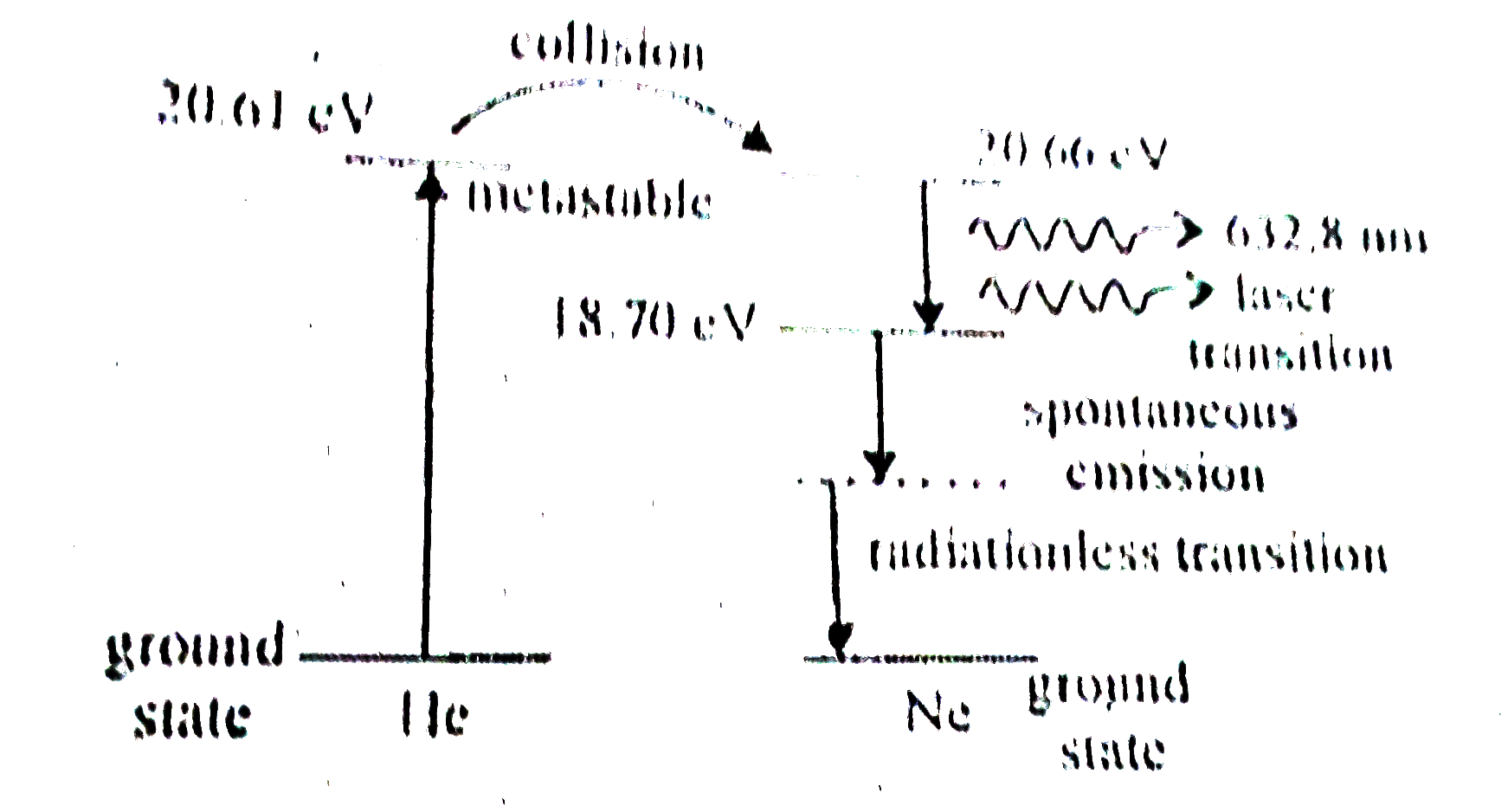Assertion:In He-Ne lase,Population inversion takes place between energy levels of neon atoms.
Reason:Helium atoms have a meta-stable energy level.
A
If both assertion and reason are true and reason is the correct explanation of assertion.
B
If both assertion and reason are truw but reason is not correct explanation of assertion
C
If assertion is true but reason is false
D
If both assertion and reason are false.
Video Solution
Text Solution
The correct Answer is:B
Helium-neon laser uses a gaseous mixture of helium and neon.An electric discharge in the gas pumps the helium atoms to higher energy level,(Which is meta stable energy level). Sequence of transitions in He-Ne lase Then these helium atom excite the neon atoms to higher level by collision and produce an inverted population of neon atom which emit radiation when they are stimulated to fall to lower level.
Sequence of transitions in He-Ne lase Then these helium atom excite the neon atoms to higher level by collision and produce an inverted population of neon atom which emit radiation when they are stimulated to fall to lower level.
|
Updated on:21/07/2023
Topper's Solved these Questions
Similar Questions
Knowledge Check
- Question 1 - Select One
Assertion In He-Nelaser, population inversion takes place between energy levels of neon atoms.
Reason Helium atoms have a metastable energy level.ABoth assertin and reason are true and reason is the correct explanation of assertionBBoth assertion and reason are true but reason is not the correct explanation of assertionCAssertion is true but reason is flaseDBoth assertion and reason are false - Question 2 - Select One
Assertion : In He-Ne laser, population inversion takes place between energy levels of neon atoms.
Reason : The base to emitter region is forward biased.AIf both the Asseration and Reason are true and reason explains the Assertion :BIf both the Assertion and Reason are true but reason does ot explain the Assertion :CIf Assertion is true but reason falseDIf Assertion is false but reason is true - Question 3 - Select One
The donor atoms have energy level
Aslightly below the conduction band.Bslightly above the conduction band.Cslightly below the valence band.Dslightly above the valence band.
The difference between atomic energy levels is observed as a measured value of the energy of
View SolutionFind the excitation energy of n = 3 level of He atom
View SolutionThe total number of subshells in fouth energy level of an atom is
View SolutionThe electronic energy levels of the hydrogen atom in the Bohr's theory are called
View SolutionThe total number of atomic orbitals in fourth energy level of an atom is.
View Solution

